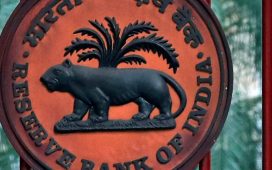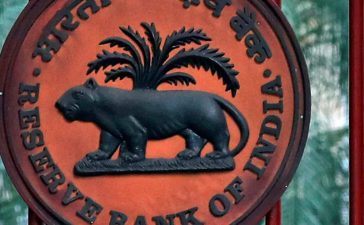
Other initiatives like Jan Shikshan Sansthan (JSS) target non-literate and rural populations, while the Pradhan Mantri YUVA Yojana promotes entrepreneurship.
Further, The launch of Skill India Digital (SID) has introduced AI-driven tools for job matching and learning.
The PM Vishwakarma Yojana supports traditional artisans by modernising their skills and integrating them into global markets, ensuring sustainable livelihoods. These initiatives aim to make India’s youth skillful.
However, as per government’s data, only about 52 per cent of final-year students and graduates are employable as of 2024. This being an increase from 31 per cent in 2014, indicates a need for further skill enhancement of the youth.
“Building a blended ecosystem of digital tools, physical infrastructure, and practical learning environments will be essential for improving learning efficacy. Although education has seen an increase in funds allocated towards increasing outreach, skill development, and improving its quality, there are hurdles in effectively supporting learning in the current context and overall student development in an increasingly challenging world,” said Niru Agarwal, Managing Trustee, Greenwood High International School, Bengaluru.
The government also revised the Model Skill Loan Scheme to facilitate loans up to Rs 7.5 lakh, with a guarantee from a government promoted fund. This measure is expected to benefit 25,000 students annually.Furthermore, financial support for loans up to Rs 10 lakh for higher education in domestic institutions was announced in the 2024 budget.
Another scheme under the Prime Minister’s package from the 2024 budget was the initiative to enhance youth employability and skill development by offering internships in 500 top companies to 1 crore youth over five years.
This program aims to provide 12 months of real-life business exposure, with an internship allowance of Rs 5,000 per month and a one-time assistance of Rs 6,000. The scheme was introduced to bridge the gap between academic knowledge and industry requirements, empowering young individuals with practical experience and financial support. It aligns with broader goals of improving employability, stimulating economic growth, and promoting sustainable development.
ITIs – Building India’s skilled workforce
The government had allocated Rs 60,000 crore over the next five years for around 1,000 ITIs to be modernised through a hub-and-spoke model.
Of the total Rs 60,000 crore, the Centre will contribute Rs 30,000, the state governments will contribute Rs 20,000 crore, and Rs 10,000 crore will be industry contributions, including CSR funding.
An ITI course is a vocational training program at an Industrial Training Institute (ITI). ITI courses teach practical skills and techniques for a specific trade or industry.
“Although education has seen an increase in funds allocated towards increasing outreach, skill development, and improving its quality, still there are hurdles in effectively supporting learning in the current context and overall student development in an increasingly challenging world,” said Niru Agarwal, Managing Trustee, Greenwood High International School, Bengaluru.
The government had said that the upgrade would involve redesigning existing courses, introducing new ones, and offering specialised short-term programs at hub ITIs.
“There is an urgent need for improving the ITIs in India. These have been the foundation of providing technical manpower in the country,” Kamlesh Vyas, Partner, Deloitte India.
Additionally, the capacity of five national institutes for trainer training will be augmented. This program is set to benefit 20 lakh students, significantly enhancing the alignment of ITI training with industry needs and creating a robust pathway for workforce development.
“The ITIs today face challenges in student mobilisation, quality of training, availability and quality of instructors, quality of machinery and industry connect. The recent interventions on transforming 1000 ITIs and on PM Internship schemes will help skill development and technical training become better. This is likely to contribute to expansion and improvement in the manufacturing sector,” Vyas added.
Educational expenditure
Apart from skill development, India’s focus was also on schooling and higher education. The budget allocated for the department of school literacy was Rs 73,498 crore, a 19.5 per cent increase over the 2023 budget. Further, The overall Budget Allocation for higher education was Rs 47,619.77 Crore.
“The country will need skilled personnel at different levels, and this demand will be met only by training students at the school level. The foundation and vision set by the government through the NEP will be vital in achieving these objectives of an effective and inclusive education system, Agarwal said.
“The total budgeted expenditure on education as a per cent of the GDP is less than 4 per cent and this needs increase to 6 per cent especially because the centre bears only one fourth of the total government spending on education, whereas the rest three-fourth of the spending comes from the States,” said Praneet Mungali, Trustee and Educationist Sanskriti Group of Schools, Pune.
The focus from the last few years has been on better skills and quality education from the grassroot level. The New Education Policy 2020 is a plan by the Government of India to reform the country’s education system.
“While new educational policies have brought promising reforms, the upcoming budget should focus on increasing access to education and technology, especially in rural and underserved areas. Building a blended ecosystem of digital tools, physical infrastructure, and practical learning environments will be essential for improving learning efficacy,” Agarwal said.
Higher education
The government has several initiatives for higher education, including providing loans at lower rates and establishing foreign universities in India.
“The government should present greater flexibility in education financing through increased allocations for student loans and decreasing rates on education loans, thereby making them accessible to aspiring students across the country,” said Bhupender Kumar Som, Director, GNIOT Institute Of Management Studies.
The country now has three established foreign universities. The United Kingdom’s University of Southampton became the first foreign university to set up its offshore campus in India under the new National Education Policy, the Centre announced in August 2024. The University Grants Commission (UGC) had in 2023 announced Setting up and Operation of Campuses of Foreign Higher Educational Institutions in India Regulations.
In January, Australia’s Deakin University became the first foreign varsity to set up a campus in India, inaugurating its branch campus in GIFT City, Gujarat.
Australia’s University of Wollongong has also opened a campus in GIFT City, Gujarat. Its classes began in July.
“Above all, we urge the budget to introduce policies that make it much easier for foreign universities to open campuses in India and enable students to receive some of the best education in the world without the need to go abroad,” said Som.
“International campuses will create new jobs in all fields, from academia to administration, and will enhance the quality of education and make India a learning destination for the world. By focusing on these key areas, this upcoming budget will help India to move toward a more inclusive, globally competitive, and skill-oriented education system,” he added.










